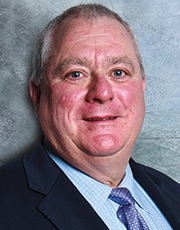
NorthMarq Capital
Real estate CEO Anthony Hitt once said “To be successful in real estate, you must always and consistently put your clients’ best interests first. When you do, your personal needs will be realized beyond your greatest expectations.” This is priority number one at NorthMarq Capital. As one of the largest privately held commercial real estate financial intermediary’s in the U.S., we provide superior debt, equity and commercial loan servicing solutions through our 36 offices nationwide. NorthMarq has built long-term relationships with life companies, CMBS platforms and local, regional and national banks. We have also maintained a long track record of multifamily loan origination through Freddie Mac, Fannie Mae and FHA/HUD. We are always in the real estate capital markets on a real time basis.
The market sentiment for commercial real estate investing is still optimistic, though the reality that we may be near the end of the current real estate cycle, especially here in the New York Metropolitan region is starting to sink in. Our recent activity with lenders supports this premise:
• Lenders are preparing for all possible scenarios given the current economic and political climate. Strong job growth and a stable economy has led to more than just talk about rate increases by the Federal Reserve this year. It is happening and increased rates are reflected in lender loan underwriting models.
• Life insurance company lenders, long the bellwether for commercial real estate lending trends, all desire lower-leveraged, higher-quality, best-of-class mortgage loans, eschewing risk for safety. For example, 70% LTV lenders last year want 65% LTV deals today. 65% lenders last year want 60% today with all lenders using marginally widening cap rates. No one wants mistakes this late in the cycle.
• CMBS lenders have gotten back into the market at lower spreads. Risk retention has been solved with some firms owning their own “B” pieces. Like life company lenders, CMBS lenders are very concerned about credit quality and leverage. 75% last year is 70% (and less) today. Lower stressed LTV ratios and increased debt yield requirements are common-place. Because of the decreased risk many CMBS shops are now willing to do full term interest only for conservative loans.
• The market for commercial property continues to be slow. More and more market participants believe prices have peaked nationally and in the Tri-State region. Property owners will no longer have cap rate compression to bail them out. The new cap rate trend is upward.
• Other capital sources who provide fuel to the lending market are the GSEs consisting of Freddie Mac, Fannie Mae, and FHA/HUD. They are the most active multifamily lenders in the country, but they too have a continued measured approach to lending.
• Regional banks and credit unions have tightened underwriting on account of new regulation and economic concerns. They will take more risk generally because of their recourse requirements.
• Money for bridge lending from private equity firms is more available now than at any time in the recent past. Generally non-recourse, these loans at 75% of value and pricing is generally 400+/- bps over Libor or higher depending on risk.
• Unlike past cycles, borrowers have not been pushing the envelope on trying to finance real estate projects. In many respects borrowers are just as disciplined.
Underwriting parameters continue to be conservative. Insurance companies are generally quoting spreads of 135-170 over U.S. Treasuries for sub 65% loans. Lower spreads for lower LTV loanss are available. The minimum debt coverage ratio is generally 1.50x assuming a 25 year amortization schedule. Available loan terms are generally 5-15 years with longer fully amortizing loans (up to 30 years) available on a select basis.
In contrast, pricing for conduit loans are generally 180-210 over swaps with loan to value ratios of 70% or less. Spreads can be tighter for lower sub 60% LTV deals. These loans generally require full leasing reserves. Generally these loans are 10 years in length with 30-year amortization. Some interest only may be available if the property, and leverage, warrants. Shorter term loans (5 to 7-year terms) are also available at wider pricing (245-295 over swaps). Shorter term CMBS loans do not trade well!
Multifamily lenders continue to have strong deal flow. Agency pricing is generally 130-150 over U.S. Treasuries for 65% LTV loans and 110-130 for sub 55% loans. 80% financing is available at 160 to 180 over treasuries. Loan terms are generally 7-10 years.
In common with all of these lenders is the desire to maintain discipline with respect loan underwriting metrics. As capital continues to chase the best deals, lenders are holding to debt yield, LTV and debt service constraints, and are insisting on getting paid for risk.
With the third quarter about to commence, investors with financing needs will have to meet market challenges head-on in order to achieve desired financing levels.
Ernest DesRochers is senior vice president and co-managing director of NorthMarq Capital’s Metro NY Regional Office, New York, NY.
